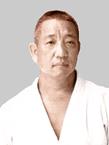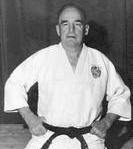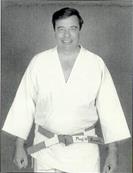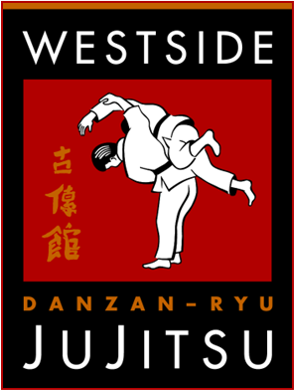


The root of the martial art we study is thought to have originated in ancient Egypt approximately 4000 years ago. From there the art traveled the Fertile Crescent of ancient Mesopotamia through Asia Minor to India and Tibet.
Historians have credited a Buddhist monk from India, Bodhidharma, with introducing martial arts into western China. As the Chinese martial arts evolved, they split into two distinct styles: northern (or soft) and southern (or hard). The hard style (karate) eventually made its way through Indonesia and the Philippines to Okinawa where it finally progressed to Japan in the late 1800s. The soft style traveled east and north across China to Korea, where it was taken back to Japan by Shinto monks during the Japanese ʻWar of Conquestʻ in 1592. The soft style brought to Japan was called Yawara.
In Japan, clans striving for supremacy embraced the knowledge the monks brought and evolved their own family (or clan) systems of techniques (ryus) for armed and unarmed combat. An individualʻs (more importantly, a clanʻs) very survival depended on mastery of these systems and the successful application thereof in battle. Good instructors were therefore quite highly regarded as keepers and transmitters of the clanʻs secrets of martial prowess. The generic term for these techniques was Jujitsu.
Toward the end of the Tokugawa era (1576-1876), traditional weapons fell into disuse due to the introduction of firearms and the associated new methods of fighting.
The science of Jujitsu was rapidly disappearing until Jigoro Kano, a student of many of the old masters, set out to revive, organize, and unify the sciences into a systematic course of instruction. In 1882 he established his school, the Kodokan, in Tokyo. Todayʻs sport Judo is the direct descendant of the system Kano developed.
Judo means the ʻgentle wayʻ and Kodokan ʻschool of studying the way.ʻ Jujitsu is an older term and is translated as ʻgentle art.ʻ Today, the word Judo denotes the sport based on Master Kanoʻs codification of Jujitsu techniques; Jujitsu continues to denote the entire art.

Professor Henry Seishiro Okazaki
At the Westside Dojo we practice the Danzan Ryu system of Jujitsu. Danzan Ryu was
founded and developed by Professor Henry Seishiro Okazaki (1890-1951) in the 1920s and was taught
at his dojo, the Kodenkan (meaning "school of ancient tradition") in Honolulu, Hawaii.
Henry S. Okazaki was born in Honshu, Japan and moved to Hawaii with his family when he was sixteen.
Suffering from a lung disorder, Professor Okazaki first studied Judo in an effort to regain his
failing health. In addition to mastering Yoshin, Iwaga and Kosogabe Jujitsu, he studied Okinawan
Karate, Chinese Gung Fu, Philippine knife play, Hawaiian Lua, as well as American boxing and
wrestling. In 1924, Professor Okazaki toured Japan and visited more than 50 dojos, acquiring 675
different kinds of techniques or forms. He also made a special study of Kappo (first aid) and
Seifukujitsu (restorative massage), because he recognized the virtue and morality of healing or
reversing the effects of disabling arts by restorative treatment.
Following his return from Japan, Professor Okazaki gradually developed and refined (from all of
the systems he had studied) a single system which he named Danzan Ryu. Danzan is translated as
"Sandalwood Mountain" and is the Chinese name for Hawaii. Professor Okazaki's system embodies the
spirit of the Hawaiian word Kokua (to cooperate or help one another), which means that the system's
arts are passed down from the advanced students to the beginning students. This is different from
most other martial arts, where the sensei (head instructor) does all of the teaching. The second
significant difference is that the Danzan Ryu Jujitsu system was open to ANYONE. This was unheard
of in Professor Okazaki's time, as martial arts were taught only to and in the Asian cultures.
Professor Okazaki believed in the American philosophy of equal opportunity.

In the 1930s, Professor Okazaki's system arrived on the mainland. Professor Raymond L. Law (1899-1969)
opened Law's Judo and Jujitsu School in Oakland, California, in 1938. He was followed shortly by
Professor Bud Estes (1909-1981) with the Chico Judo Academy, Professor Richard Rickerts (1906-1990)
of the American Judo and Jujitsu Federation, and Professor John Cahill (1907-1962) and the Cahill
Judo School. All of these Jujitsu pioneers are now deceased, but they have left a legacy that now
reaches into most of the United States, continuing to fulfill Professor Okazaki's dream of having
his system taught in every state of the Union.

William G. Randle, Judan (10th degree Black Belt), a student of Professor Raymond L. Law and currently sensei at the Westside Dojo, was instrumental in bringing Danzan Ryu to Southern California. After two years of teaching a neighborhood program out of a garage, he started the Jujitsu program at the Santa Monica YMCA in 1959. Professor Randle promoted his first black belts, Michael A. Chubb and James A. Marcinkus (deceased), in the early 1960s. In 1972, he brought Jujitsu to the newly opened Westside Family YMCA, where it continued until the move of the YMCA in 2018 to the new Collins & Katz facility in West Los Angeles, where it remains a cornerstone of YMCA programming today.


The Westside Dojo
Professor William G. Randle
Head Instructor
The Westside Dojo meets at the Collins & Katz Family YMCA, in the Professor William G. Randle Room (Studio 221)
1466 S Westgate Avenue
Los Angeles, CA 90025
(310) 477-1511
Classes are held Tuesday and Thursday evenings from 8:00pm to 10:00pm. Training is ongoing, and adult students of any level are welcome to join us at any time.